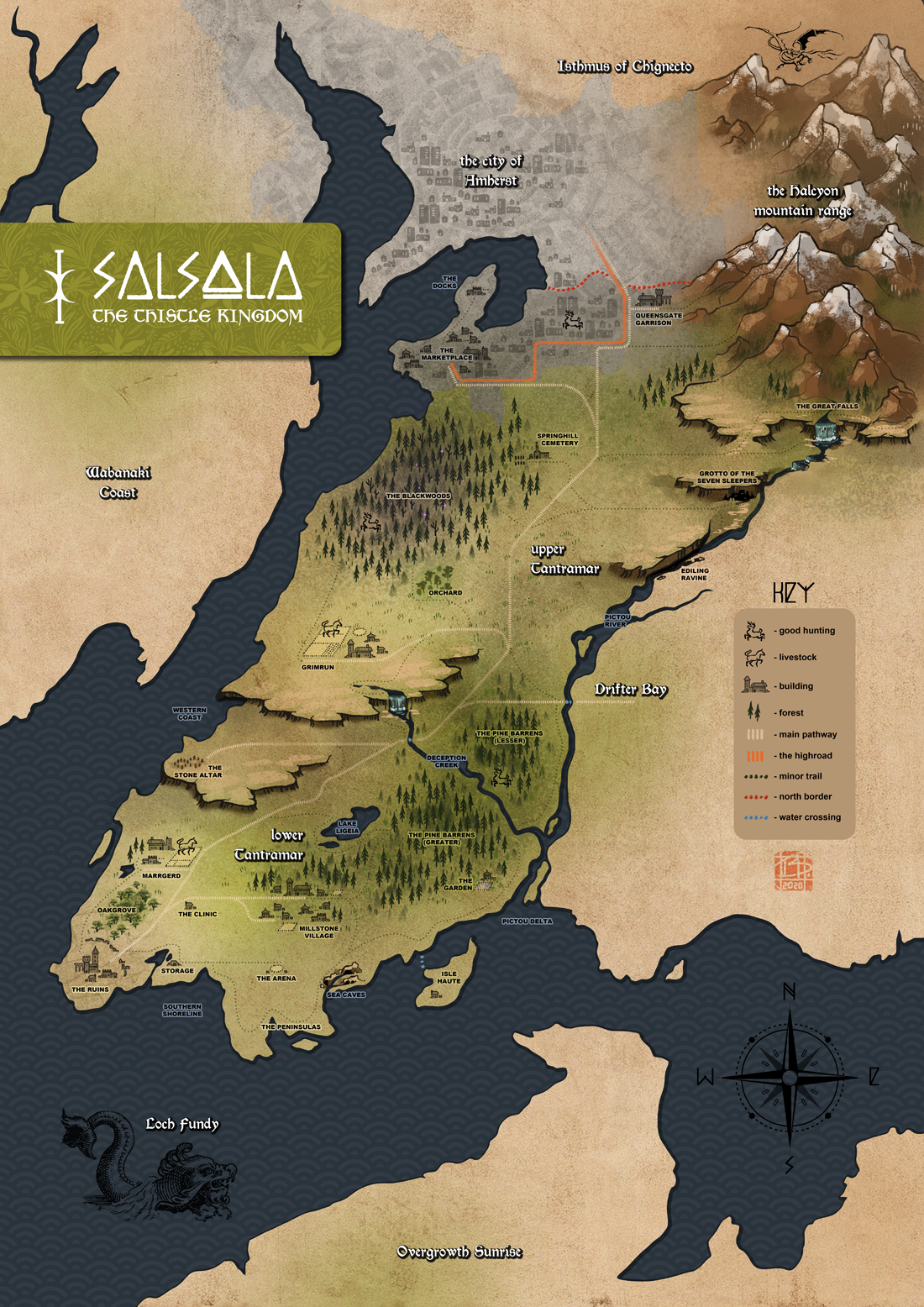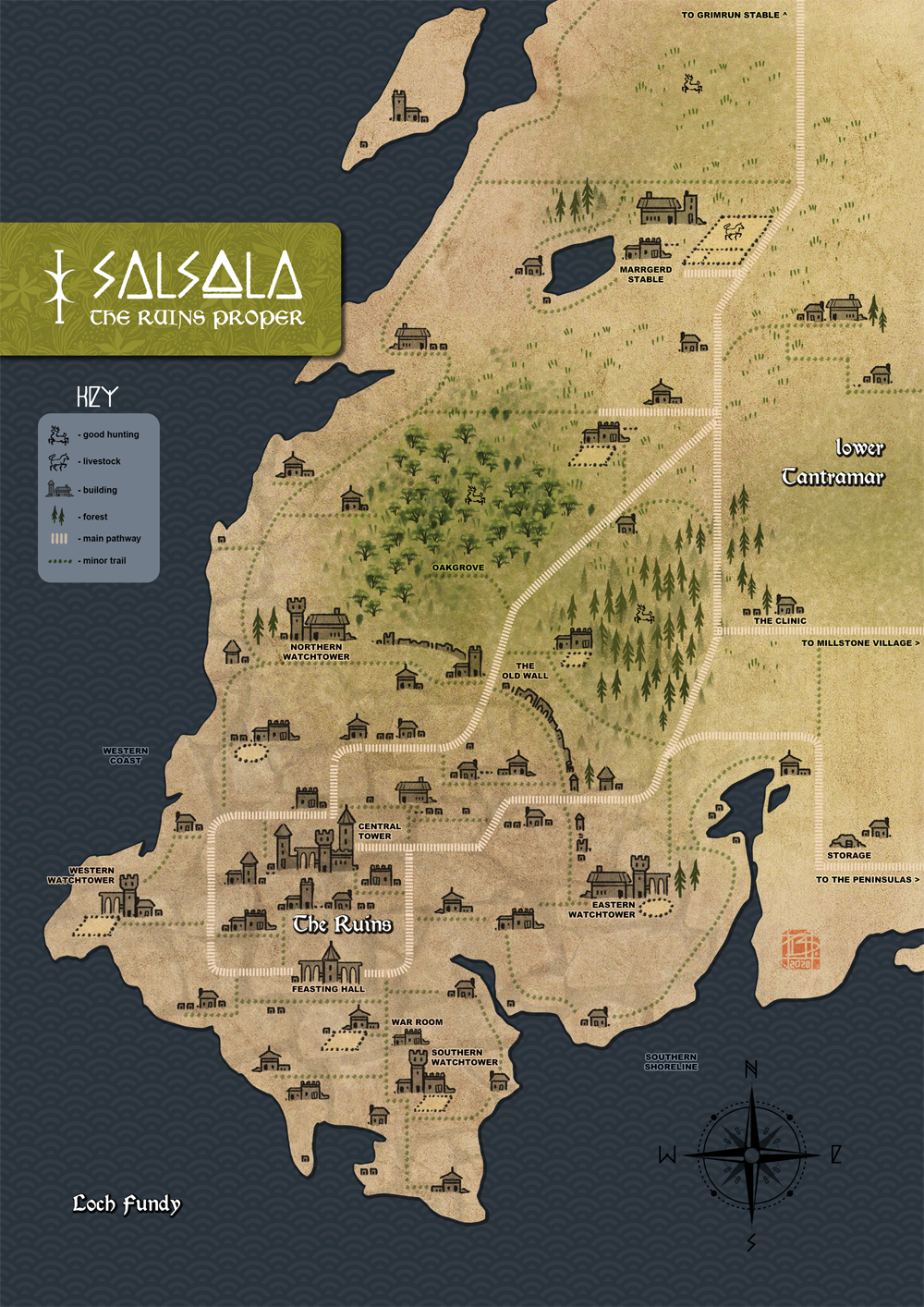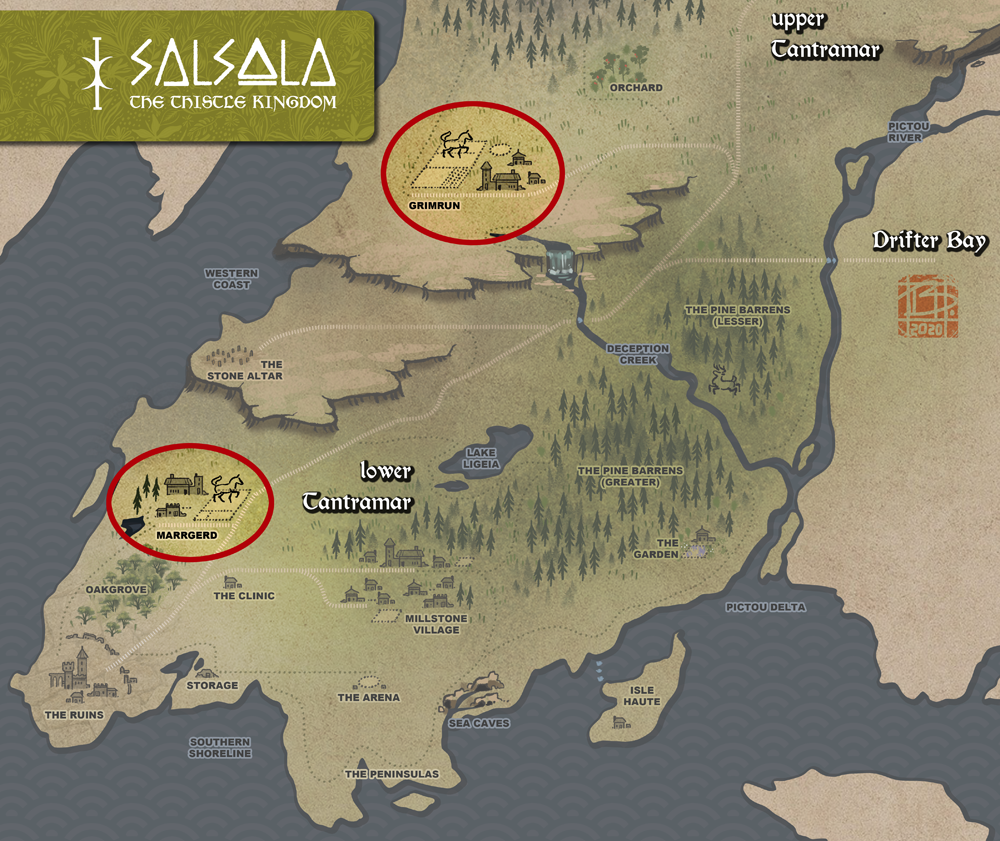Salsola - Stables
| » Hide « |
| General | |
|
Information
| |
|
» Policies |
» Rank Portal |
|
Joining Salsola?
| |
|
Reading our introductory information is mandatory before attempting to join! | |
| Territory | |
|
The Thistle Kingdom (Territory)
| |
|
The Portland Outpost
| |
|
The Fort Preble Outpost at Portland, Maine, is an important off-board trade destination for Salsola. » Longterm aNPCs may eventually be moved here.
| |
| Membership | |
|
Membership Exclusives
| |
|
» Factions | |
|
Rosters
| |
| Miscellaneous | |
|
OOC Fun
| |
|
» Pack Pride | |
| Quick Maps | |
| Contact & Links |
|
External Links
| |
|
Contact Us
| |
|
» Pack Account — For all general inquiries, please PM the SL Pack Account. | |
|
Discord
|
|
Salsola has its own Discord Chat! To be added to the channel, please contact Salsolan Leadership. » Only players of active or aNPC'd Salsolans may join the Salsola Discord Chat.
|
Salsolan Stables
On this page... (hide)
|
Stable Locations |
|
by Alaine |
Since its inception, Salsola has been a pack which recognized the use – and value – of horses and livestock. Indeed, half of the elite Ranger Faction is composed of roles dedicated to the care and upkeep of these animals.
When the pack was originally founded, the number of communal animals was much smaller, as was the pack's territory. The first barn was constructed close to the central Ruins and in such a way to keep it hidden from any curious outsiders. As Salsola grew and expanded, a second barn was constructed in order to better divide and focus the roles of the animals owned by the pack. The majority of these animals are horses, including the unique Pauson, a breed created and maintained by the Thistle Kingdom. Beyond horses, Salsola keeps standard livestock like sheep, goats, and pigs. There are a few cattle, and several unique animals that can be found at the barns. Additionally, a variety of fowl and collection of rabbits are available for member use.
Salsola's horses are organized in specific groups in order to have the best cohesion of personalities. There is a hierarchy within these “herds” as well, though this is often regulated by its keepers to prevent serious infighting or damage from aggression. Stallions are especially given more discipline in terms of their training and use.
1. The Barns
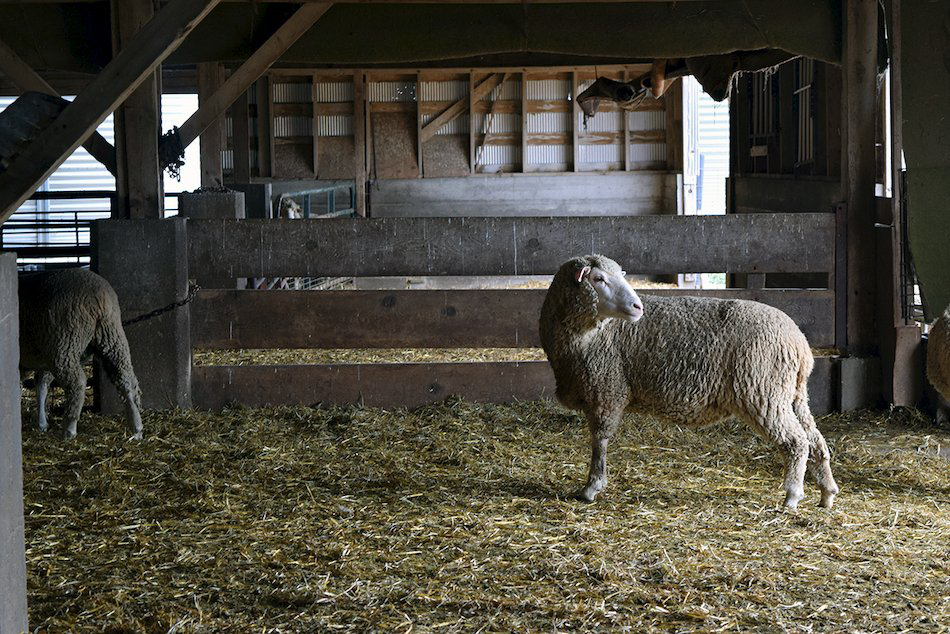 The original barn constructed by some of the founding members of Salsola, Marrgerd is home to the majority of Salsola’s communal horses as well as nearly the entirety of of the kingdom’s livestock. Closer to The Ruins, this building is well-hidden from natural overgrowth despite its prime location. Horses located here are among the most well trained and experienced with riders. Privately owned horses are occasionally housed in spare stalls, if there is no suitable accommodation for them nearer to their owner’s residence. Blanche Briarhart and Flint Gaumond live in the area, and can regularly be found tending to the animals and grounds. |
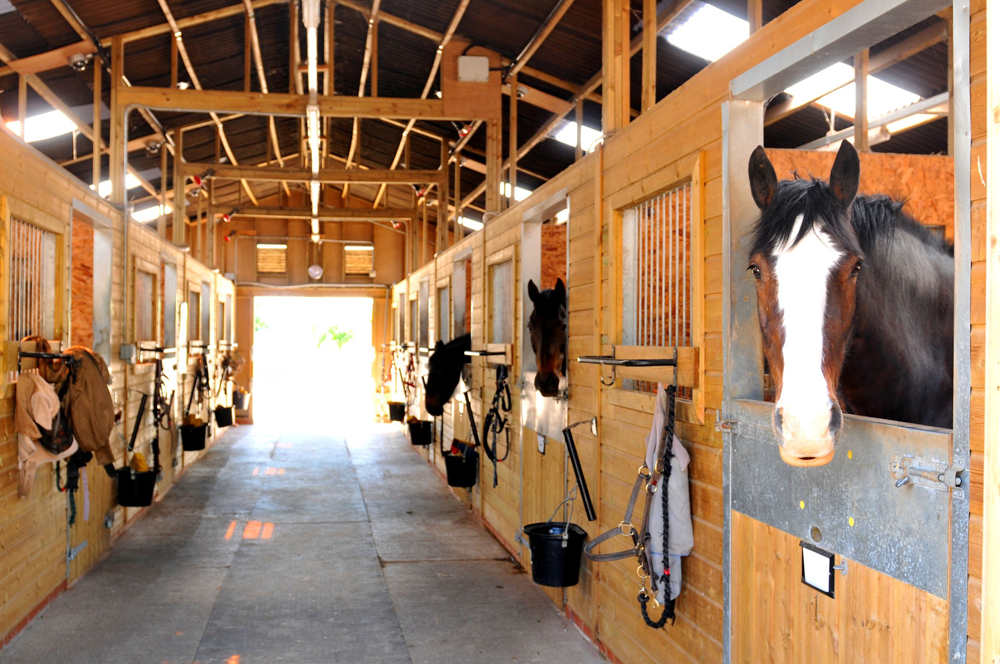 Acting as the heart of the Pauson Breeding Program, and based upon the design of an older building replaced in the process of original construction, this barn is much larger than its older companion. Only equines are housed in Grimrun, and here the authority of the Equinest and their Vaqueros is all but law — these horses are considerably extremely valuable to the pack, and have more restrictions when it comes to member use. All horses stabled here are in use (in one way or another) for the breeding program. Behind dense forest growth and the thick wooden doors of Grimrun, Salsola is quietly developing its own breed of horse - one of the first of the new age in Nova Scotia since the fall of humankind. Cole Eachan lives in the area, and works closely with the horses. |
| Livestock Numbers | |||
| Large livestock | Small livestock | Fowl | |
| 25 out of 26 | |||
2. Horses
|
The advancement of civilization is said to be integral to the introduction and use of the horse, and the gentrified kingdom of Salsola has adopted this stance heartily. Horses have been traded, captured, and raised by the Thistle Kingdom since its inception, often seen as a mark of wealth, rank and status. It is for this reason that gifting horses has remained a popular tradition amongst members, some of whom even do so to the general pack itself. Beyond those horses owned directly by Salsola or its members, the pack shares the rights to a great number of wild roaming horses with neighboring coyote clan Inferni. Known as the Drifter Bay Herds, many of these horses were seized and turned loose in the aftermath of the Boreas Conflict. Their steadiness in number has become a dependable source of wealth for both the Thistle Kingdom and their coyote allies, furthering the equine prevalence that is a staple of Salsolan culture. |
2.1 Member Use |
|
Any Family-ranked member or above is permitted to use communal horses for their own personal use1. This could be for something as simple as a pleasure ride or as long-term as an extended trip to the Outpost/a lengthy infiltration beyond the borders. There is no required protocol for an individual using a communal horse, though letting others know of their absence is usually a good idea. There are several types of tack available for members who do not have their own, though this is largely very basic and rustic — a few notable saddles claimed as spoils are often the first to go when horses are being used. Though by and large a “first come first serve” basis exists, there are undoubtedly favored animals and higher-ranking members may not be so pleased about not getting to use their favorite horse. A character should consider their intended use of the horse when choosing which one to take, as taking a hot-blooded cavalry horse to drag logs is not an especially good use of their skills. The Equniest will gladly point out these specifics when asked, and can help direct members to a horse that best suits their purpose (or riding level). |
2.2 Training |
2.3 Breeding |
|
An important part to the growth of Salsola’s herds is tied to the breeding of horses, both in the well-thought out members of a selective breeding program or to the pairing of foreign animals to spread new blood. Members are permitted the use of horses for breeding upon approval from the leadership. Often there is some sort of exchange for these rights, especially when it comes to the use of a broodmare — sometimes this is as simple as providing supplies, other times it may require specific requests from the pack leaders. |
The Pauson Horse |
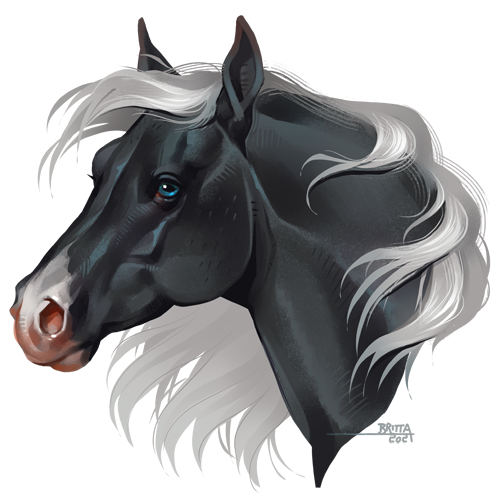 A silver-black Pauson horse, by Alaine A several-year ongoing project begun in 2012 and spearheaded by Boss Salvia Eternity to develop a distinctive, hardy Northern breed, the Pauson horse is Salsola’s unique creation. Noted for their pale mane and tails, dappled coats, enhanced agility and sturdy footing, these valuable animals are the pride of the Thistle Kingdom. The Pauson breed is heavily influenced by the wild northern horse populations in Nova Scotia, but also maintains a direct bloodline traceable back to purebred Rocky Mountain stock. The Pauson standard is generally considered to be a Baroque horse, and is agile but sturdy. The standard coloration of the Pauson horse is most commonly referred to as a Black Silver dapple. This refers largely to the horse's’ mane and tail, which must be flaxen and of a lighter color than the base coat. True breed-standard horses are preferred to have a dark grey/charcoal/black coat, with a silvery mane and tail. Typically, the appearance of lighter rings (dapples) of hair occurs in these dark pelts to varying degrees - some animals may have noticeable dappling, while others may appear as flat, uniform color. |
3. Livestock
|
For as long as Salsola has coveted horses, it has also kept livestock. The ability to raise a sustainable source of food and raw materials helped Salsola in establishing supplies for its trade routes, as well as allowing for a larger stable population of Luperci within the territory itself. The development of a rural agricultural lifestyle has allowed for many Salsolans to spend the time that they would otherwise had spent hunting for their meals instead honing specialisations in skill and craft.
|
4. Inventory
4.1 Equipment & Tools |
| Item | Amount | Tags | Item Description & Notes |
Carts & Wagons | |||
| Cart, covered | x01 | Return |
|
| Cart, open | x01 | Return |
|
| Cart, open farm | x01 | Return |
|
| Wagon, enclosed (Romani-style) | x02 | Return |
|
5. Trade
|
Trade notations are located with each animal, though for specific questions regarding the use of animals please contact the Salsola Leadership. Beyond live animals, the barns of Salsola help to provide a variety of goods including meats, wool, leather, and feathers. These supplies are often transported to the Goods Storage by helpful members (especially those wanting a first-choice when it comes to these materials). |
Livestock Feed | |||
| Bluejoint | Wild growth | No Trade |
|
| Switchgrass | Wild growth | No Trade |
|
1 It is worth noting that because Salsola values its horses as a show of wealth and quality, how a member treats and uses an animal will reflect back onto said person. Damage done to a communal horse in the care of a rider will reflect directly back upon said rider, and may result in IC consequences.. ⇑


